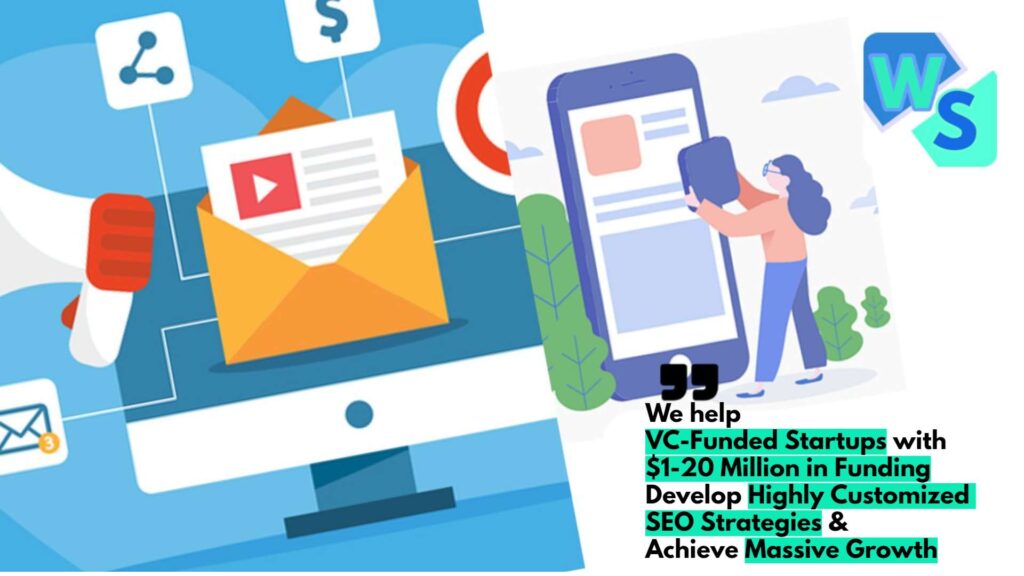Identifying Target Audience
Definition and Importance
A target audience is like finding your tribe—it’s the group of folks most likely to dig what a business is offering, whether it’s a snazzy product, a top-notch service, or a killer message. We’re talking about people who share similar interests, needs, and even quirks. Nailing who they are is crucial to whipping up marketing magic that resonates, and helps in steering clear of wasted efforts on folks who just aren’t interested. Picking the right audience fine-tunes your promotions into high gear, making branding efforts hit home just right (Adobe Express).
| Key Points | Description |
|---|---|
| Specificity | Pinpointed group with shared traits |
| Importance | Customizes marketing for better zing |
| Common Characteristics | Might include demographics, interests, and behaviors |
Thirsty for more? Check out our insights on how to define a target audience.
Target Audience vs. Target Market
Now, we’re getting into the nitty-gritty. Trying to tell a target audience apart from a target market is like the difference between your inner circle and casual acquaintances. Your target audience is that close-knit gang within the bigger crowd, defined by shared interests and demographics that make them most likely to vibe with what you’re throwing down.
| Characteristic | Target Audience | Target Market |
|---|---|---|
| Definition | A specific group ready for action | The whole shebang you’re aiming at |
| Scope | Laser-focused and precise | All-encompassing |
| Purpose | Sparks direct engagement | Covers a wide range of potentials |
Getting these terms straight means you’re lining up those marketing arrows with precision. More details? Peek at our take on target audience marketing definition.
Strategies for Understanding Your Audience
Nailing who you’re talking to is the secret sauce of great marketing. Here’s a couple of simple tactics aimed at getting to know your crowd better: sketching out a perfect audience and giving your marketing gear a personal touch.
Building Target Audience Profiles
Imagine trying to sell ice to an Eskimo—sounds silly, right? That’s why knowing your peeps is crucial. Build what marketers like to call “buyer personas.” These detailed folks aren’t real, but they sure help you figure out who you’re selling to. We’re talking about details like their age, income, what they’d binge on Netflix, and what gets them up in the morning. If your customer was a movie character, who would they be? That’s the level of understanding we’re aiming for. Once you’ve got this figured out, tailoring your brand and strategies becomes a breeze.
Let’s break it down:
| Component | What’s it Say About ‘Em? |
|---|---|
| Demographics | Age, what they earn, if they’ve got a degree, where they hang their hat |
| Interests | What they’re into, their hobbies, and what media they consume more than they should |
| Personality Traits | Are they the life of the party or the wallflower? |
| Motivations | What’s their “why” behind those shopping choices? |
Getting this scoop means you steer clear of any marketing hiccups and keep things tight with your potential customers.
Personalizing Marketing Materials
Everyone and their grandma knows personalization is key these days. You can’t just throw spaghetti at the wall and see what sticks. By sizing up your audience based on traits and habits, you can serve up content that’s right up their alley. This tweak doesn’t just catch eyes; it builds trust and makes customers feel like you’re talking just to them, and that’s golden.
Consider these tools in your kit:
| Technique | What’s the Deal? |
|---|---|
| Email Marketing Segmentation | Tailoring your emails based on what your audience is into and how they behave |
| Customized Content | Crafting messages that sound like they’ve been written just for them |
| Dynamic Website Content | Swapping out website sections based on who’s visiting |
Tossing these strategies into your mix isn’t just smart—it’s a game-changer. Not only do people hear you loud and clear, but they also feel the love, boosting the chance they’ll stick around. For more tips and tricks on nailing your audience understanding, check out target audience analysis and target audience segmentation.
Effective Target Audience Segmentation
Okay folks, listen up. Segmenting your target audience is your ticket to unlocking marketing magic. No more hit-or-miss attempts; this is your cheat sheet to speaking their language. Now, two standout personality types: demographics and psychographics.
Demographics
First up, demographics are like playing connect-the-dots with your audience’s life details, turning them into neat little groups. Think of stats like age, gender, nationality—you get the drift. It’s about knowing who’s who so you can craft messages that stick. Just imagine it as your GPS to the right customers.
| Demographic Factor | Examples |
|---|---|
| Age | 18-24, 25-34, 35-44 |
| Gender | Male, Female, Non-binary |
| Income Level | Low, Medium, High |
| Education | High School, Bachelor’s, Master’s |
Get a grip on these factors, and you’ll have a killer target audience definition. It helps you zero in on where to find these folks too. For a deep dive, click on our piece about target audience demographics.
Psychographics
Switching gears, psychographics peel back the layers of consumer mindsets. This one’s about their life story—what they dig, their hang-ups, and what gets them out of bed. Here, it’s all about making that emotional connection—hit their hearts, not just their heads.
| Psychographic Factor | Description |
|---|---|
| Personality Traits | Introverted, Extroverted |
| Lifestyle | Health-conscious, Luxury-seeking |
| Social Class | Working-class, Upper-middle-class |
| Interests | Sports, Technology, Fashion |
Embrace psychographics to sketch your ideal customer like a pro artist. These factors build personas that actually make sense. Curious to know more? Peek at our article on target audience analysis.
Psychographics tap into feelings and meanings (Hotjar), which is basically the secret sauce in getting the full picture. When you combine both demographic and psychographic insights, it’s like switching on a light bulb for your entire marketing strategy. Want the blueprint to succeed? Check out the lowdown on target audience segmentation strategies.
Refining Target Audience Profiles
Refining target audience profiles is the bread and butter for businesses wanting to truly click with potential customers. Two tried-and-true methods to sharpen these profiles? Think buyer personas and digging into the data from tools like Google Analytics.
Buyer Personas
Creating buyer personas is like giving a face to your ideal customer. You’re basically painting a picture, with a touch of artistic flair, to highlight who you’re aiming at. We’re talking about getting the scoop on demographics, what makes them tick, and what lights a fire under their purchasing decisions. Picture your brand serving up content that feels like it was handcrafted just for them.
A juicy buyer persona usually rolls with these attributes in tow:
| Attribute | What It Means |
|---|---|
| Name | A made-up name for quick and easy reference |
| Age | The age bracket you’re aiming at |
| Gender | Gender identity of your audience |
| Income Level | Their expected earnings range |
| Interests | What they’re into, hobby-wise |
| Pain Points | The hurdles or sore spots they face |
| Purchase Motivations | What pushes them to make that buy |
Nailing these elements means your biz can create ads and content that actually resonates. Sound interesting? Jump into our stash of tips on crafting buyer personas.
Utilizing Google Analytics
Google Analytics is the not-so-secret weapon to peel back the curtain on your online visitors. It’s like having access to the analytics crystal ball that shows who’s visiting your site and what they’re up to. We’re talking stats on demographics, interests, and even how they mosey around your site.
Some hot metrics to keep an eye on:
| Metric | What It Means |
|---|---|
| User Demographics | Who they are by age and gender |
| Geographic Data | Where they’re logging in from |
| Interests | What categories these folks are vibing with |
| Behavior Flow | How they move through your site and where they jump ship |
This kind of insight lets you fine-tune your marketing mojo so it speaks directly to the heart of your audience. Wanna dig more into this kind of number-crunching magic? Check out our handy guides on audience analysis techniques and snag a peek at our analysis tools.
Mixing up those buyer persona sketches with hardcore data from the likes of Google Analytics? That’s the recipe for marketing strategies that are basically a high-five from your brand to your audience.
Addressing Audience Pain Points
Getting to grips with what bugs your audience is the ticket to nailing who you’re talking to. These pain points aren’t just hiccups—sometimes they’re colossal headaches that can make or break whether someone decides to spend money with you. By spotting these issues, brands can step up as the hero in the story, winning over customers who learn to trust and stick around.
Understanding Pain Points
Spotting what troubles your audience takes a keen eye and a good listen. Here’s a closer look at what might be irking them:
- Monetary Pain Points: These are the wallet woes, like budgeting that stops folks from pulling the trigger on a purchase.
- Product/Service-Related Issues: Here, we’re talking dud products or services that don’t live up to the hype.
- Time Constraints: When the clock’s your enemy, and there’s no time to spare, that can grind the gears.
- Process Challenges: The obstacles in figuring out how to make the most of what they’re buying.
When a brand tackles these frustrations head-on, engagement spikes, leading to marketing goldmines.
Market Research Techniques
Digging into market research is your go-to for uncovering what really irks your audience. Here’s how to get the inside scoop:
| Research Technique | Description |
|---|---|
| Surveys | Got a crowd? Send out questionnaires to learn the popular gripes and preferences. |
| Interviews | Sit down, one-on-one, to get the story straight on personal pain. |
| Focus Groups | Gather a bunch of folks for a chit-chat that unveils a web of viewpoints on pain points. |
| Social Media Monitoring | Peek into social media chatter to catch wind of what commonly goes awry. |
| Competitor Analysis | Check out what rivals are up to, scouring their pitches and feedback for gaps and woes you can address. |
By rolling with these strategies, brands can fine-tune their message and products, making sure they’re not just another face in the crowd. When a company takes care of what’s bugging their audience, not only do customers leave happier, but there’s also a noticeable bump in conversion rates and brand devotion. Curious for more tips? Dig into our resource on target audience analysis.
Tapping Into Audience Psychology
Getting inside the heads of your audience goes way beyond knowing their age or income. Psychographics digs into what makes folks tick—looking at the emotions and thoughts that drive them to buy one thing over another.
What Makes People Tick
By understanding psychographic details, marketers get the scoop on what motivates people to pull out their wallets. Here’s what we’re talking about:
- Values: These are the core beliefs that steer what people love or refuse to buy.
- Interests: Think hobbies and pastimes that can predict where they might spend a few bucks.
- Lifestyle: It’s the daily grind that shows their priorities and routines.
- Attitudes: These shape opinions on different brands, swaying purchase decisions.
Grabbing this intel on spending patterns, mindsets, and values opens up a whole new world of why customers are drawn to particular goodies (source).
| Psychographic Element | What It Means |
|---|---|
| Values | What they hold dear |
| Interests | Activities that guide spending |
| Lifestyle | Everyday actions reflecting choices |
| Attitudes | Brand perceptions and loyalties |
Why It Matters in Marketing
Teaming up psychographics with those old-school demographics kicks customer focus up a notch. This combo lets businesses craft detailed buyer profiles, making it easier to slice and dice your market into segments that hit the bullseye (source).
Understanding what makes your audience tick means you can write ads like you’re talking to a friend, which makes them more engaging and boosts those conversion numbers. Profiling through psychographics helps not just in tweaking the message but also in how you position your products and strategize promotions.
Using psychographics, you can pinpoint what irks your customers and what hurdles they think they’ll face. This means you’re prepared to offer precisely what’s needed to solve their grumbles. Creating conversations that answer consumer concerns helps forge those tight-knit connections between brands and buyers.
Curious for more hints on figuring out your audience? Feel free to hop over to our resources on audience analysis and audience segmentation.
Engaging with Gen Z
Cracking the Gen Z code is like nailing down a TikTok dance—perfect blend of rhythm, style, and staying in step. Born between 1997 and 2012, these folks are a whole flavor of cool, and getting their attention isn’t just a challenge, it’s a key part of sprucing up any brand.
Values and Preferences
To speak Gen Z fluently, you gotta know what makes them tick. Dive into these must-know values:
| What They Value | What’s the Scoop? |
|---|---|
| Keep It Real | They want the raw, unfiltered truth. Brands that keep it 100 and share real talk are the ones they vibe with big time. Trust isn’t given—they gotta feel the authenticity to connect. Forbes |
| Stand Out | No copycats allowed! They’re all about brands that break the mold and embrace their own quirky, awesome selves. |
| Give a Hoot About the World | Gen Z leans toward brands that care about the planet and the people on it. Support for social causes like sustainability? Major thumbs up. Forbes |
| Keep It Fun | Content that’s shareable, meme-worthy, or user-created? That’s their sweet spot. They want stuff that’s as ready-to-share as they are. Forbes |
Strategies for Effective Engagement
Reaching out to Gen Z? It’s not rocket science; just align with their groove:
Be Straight Up: Show your true colors. Let transparency rule—don’t sugarcoat or masquerade. Build a bridge of trust with your customers by sticking to your word.
Get Users Involved: Let them work their magic! Tap into their creativity by encouraging them to make and share content that’s all about you. It’s like throwing a virtual party they’re eager to join.
Master Social Media: Hive spots are TikTok, Instagram, and Snapchat. Keep them buzzing with clever campaigns that invite likes, shares, and laughs.
Make Your Stand Known: Show some love for sustainability or diversity. Gen Z wants to know you’re not just in it for the profit, but for the impact—loud and clear.
Go Interactive: Sprinkle in some fun with polls, quizzes, or challenges. Turn passive scrolls into interactive adventures that captivate and bring them back for more.
By dialing into these tactics, brands can sync up with Gen Z, jazzing up their marketing mojo and nailing down that audience sweet spot. Nailing what makes them tick is your golden ticket to target audience profiling.
Reaching Target Audiences
Marketing isn’t just about throwing your message out there; it’s all about hitting the right folks with stuff that matters to them. Here, we’re talking about two main crowd types: those driven by what they love and those with itchy-buy fingers.
Interest-Based Target Audiences
Interest-based crowds are folks bonded by the stuff they dig. They’re not just passive observers; they’re actively on the hunt for content or products that fuel their passions. Ever thought about these groups?
- Sports nuts
- Food junkies
- Console warriors
- Page-turning addicts
- Nature wanderers
- Fashion-forward peeps
Brands can whip up treats just for these folks—like content, goodies, and promotions that hit home (Adobe Business).
| Interest Group | Example Targeted Content |
|---|---|
| Sports Nuts | Ads for sports gear, tips for athletes |
| Food Junkies | Recipe posts, cooking sessions, gourmet ads |
| Console Warriors | Game critiques, live streams, gear suggestions |
| Page-Turning Addicts | Chats with authors, book club pitches, must-reads |
When brands open a dialogue with these enthusiasts, it’s like sparking a new friendship—it sticks, building a bond that lasts.
Purchase Intention-Based Target Audiences
Purchase-minded folks are cruising closer to buying; they’re already dropping hints by their actions. Picture these scenarios:
- Shopping cart fillers
- Deal chasers through newsletters
- Review readers in search of the best buy (Adobe Business)
Spotting and zeroing in on this crew with the right mojo can really roll in the sales.
| Purchase Intention Indicator | Example Action |
|---|---|
| Abandoned Carts | Ads with juicy discounts |
| Newsletter Fans | Special offers just for you |
| Product Sleuths | In-depth comparisons galore |
Landing these audiences means using smart detective work—think demographics, vibes, and shopping habits. When you hit the right notes, you’re speaking the language of the customer, boosting interaction and making your business the go-to in its field (Adobe). For more tips, check the guides on target audience analysis and target audience segmentation.





















